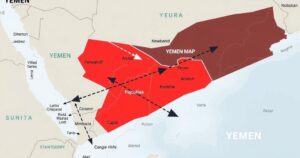Bashar al-Assad and the Syrian Civil War: A Persistent Conflict

Beginning in March 2011, protests against Bashar al-Assad’s regime escalated into a civil war marked by alleged human rights violations and violent government repression. International intervention and regional dynamics further complicated the conflict, culminating in Assad maintaining power with Russian support while facing significant territorial challenges and deteriorating international backing by 2024.
In March 2011, President Bashar al-Assad encountered significant protests against his regime, a part of the wider Arab Spring movements within the Middle East and North Africa. The government’s response involved violent repression, with security forces committing lethal acts against demonstrators while Assad proposed some superficial reforms amidst the escalating violence. As the protests evolved into armed conflict, international mediation efforts failed to establish peace, culminating in a protracted civil war.
The conflict intensified with the emergence of armed opposition groups challenging Assad’s forces. Despite his assertions of thwarting foreign conspiracies and armed insurgents, Assad’s government suffered significant leadership losses in mid-2012 due to a bombing during a cabinet meeting. As military engagement grew, international stakeholders became involved, and regional powers began supplying arms to opposing factions while Assad continued to rely on support from allies such as Iran and Hezbollah.
Allegations of chemical weapon usage by Assad’s regime, particularly during a 2013 incident in Damascus, escalated calls for international intervention. Although Assad denied involvement, powerful nations threatened military responses based on intelligence reports. Ultimately, intervention was averted via diplomatic agreements concerning the control of Syria’s chemical arsenal, but ongoing violations of human rights drew extensive criticism against Assad’s military tactics.
As the Syrian Civil War persisted, Assad’s grip on power appeared to solidify despite previously uncertain prospects. The rise of the Islamic State forced former opponents of Assad to redirect their priorities. Russian military intervention in 2015 proved decisive, restoring Assad’s dominance over major urban areas by 2017, with remnants of opposition forces confined primarily to Idlib.
While violence waned elsewhere, Assad initiated reconstruction initiatives to rebuild Syria, including infrastructure projects and new laws addressing property rights, which stirred criticism due to the potential disenfranchisement of displaced persons. In 2024, however, Assad’s regime faced existential threats from dwindling international support and opposition advances, leading to significant territorial losses and ultimately his departure from Damascus as rebel forces gained ground.
Bashar al-Assad, a member of the Baʿath Party and son of Hafez al-Assad, has ruled Syria amid a prolonged civil conflict that escalated from initial protests in 2011. The unrest roots back to regional pro-democracy movements, yet Assad’s administration responded with violence rather than reform, proving a catalyst for further escalation. As external influences grew, including those from regional and world powers, the complexity of the Syrian conflict deepened, resulting in dire humanitarian and geopolitical consequences.
The Syrian conflict exemplifies the interplay between internal uprising and external powers, showcasing the resilience of Assad’s regime despite widespread violence and subsequent allegations of human rights abuses. As the civil war evolved, Assad’s strategies for maintaining power included violent repression, international alliances, and contentious reconstruction policies. The situation remains fluid, with developments in 2024 highlighting the precarious nature of Assad’s control and the ongoing consequences of the conflict for Syria’s future.
Original Source: www.britannica.com








